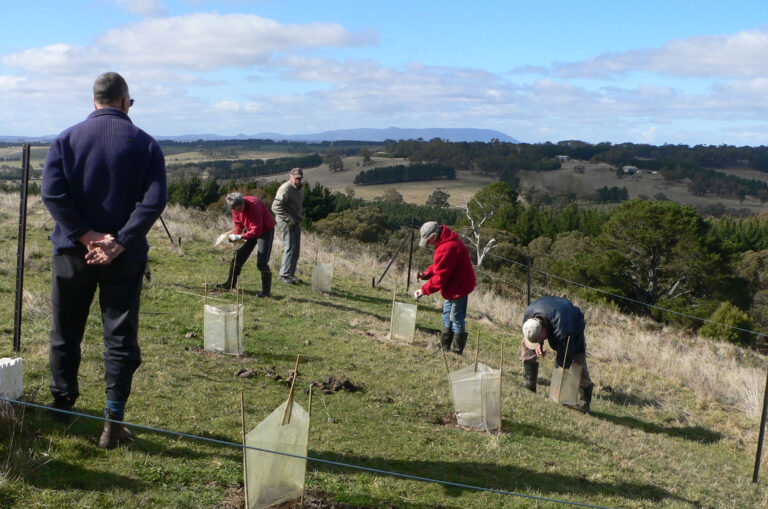Formed in 1996
Incorporated in 2020
Registered as a charity in 2024
120 Members as of 2025
Welcome to Malmsbury District Landcare Group
Malmsbury District Landcare recognises the Djaara (people) of the Dja Dja Wurrung as the Traditional Custodians of Djandak (the land) on which we live, learn and work.
They have cared for this country for thousands of years and we pay our respects to their leaders and Elders past and present.
We draw your attention to the Galk Galk Gundidj clan (belonging to the forest) who once roamed this part of Country.
Who We Are and What We Do
Malmsbury District Landcare Group is a passionate and hands-on community group working to protect and restore our local environment — from the bush blocks and backyards of Malmsbury and Lauriston, to the forested hills near Denver and the mighty Wombat State Forest.
Our members span across the Macedon Ranges, Hepburn and Mount Alexander Shires, with most living locally on small rural or lifestyle properties. Whether you’re a seasoned land steward or new to the land, there’s a place for you in our community.
Our Impact (so far!)
- 30,000+ indigenous trees and shrubs planted on members’ properties since 2009
- 10,000+ more planted across local reserves and public land
- Regular field days, flora & fauna surveys, and collaborative excursions
- Quarterly newsletters, engaging talks, and public events
- Ongoing restoration of the Coliban River, Kangaroo Creek, and soon, Back Creek!
We’ve become known for turning neglected public land into thriving community assets. With a strong focus on waterways and wildlife, our projects have uncovered threatened species like:
- Greater Gliders
- Brush-tailed Phascogales
- Bibron’s Toadlet
- Six threatened bird species
- 18 species of threatened native flora including a Critically Endangered Acacia species
If you’re keen on wildlife conservation, you can also get involved helping to monitor the remarkable biodiversity in our region.
Join Us!
We believe in Landcare for everyone. Whether you want to plant a tree, join a fauna survey, come to a community BBQ, or just stay connected through our newsletter — if you are interested in getting involved you can access our Membership Form here.
Together, we care for the land that sustains us all. Come and be part of something meaningful, local, and deeply rooted in community and Country.

